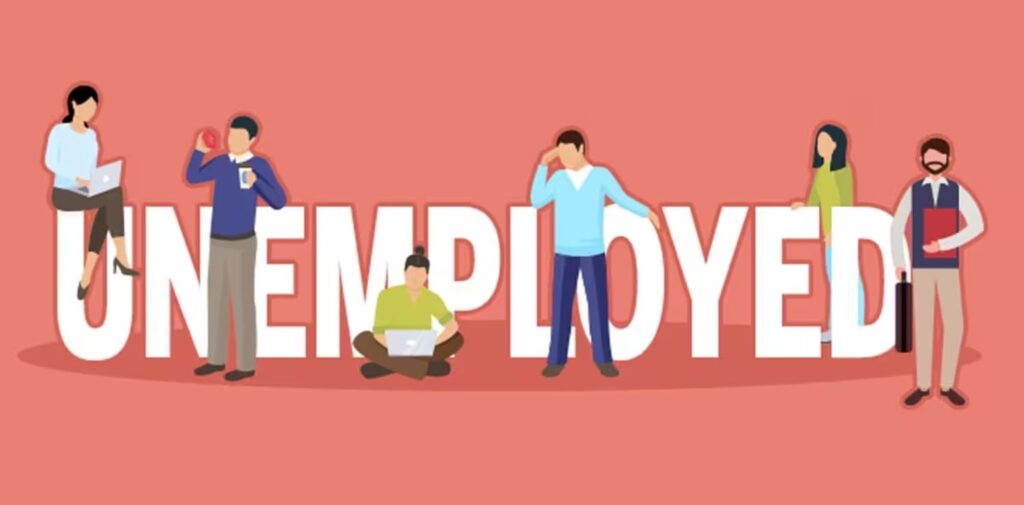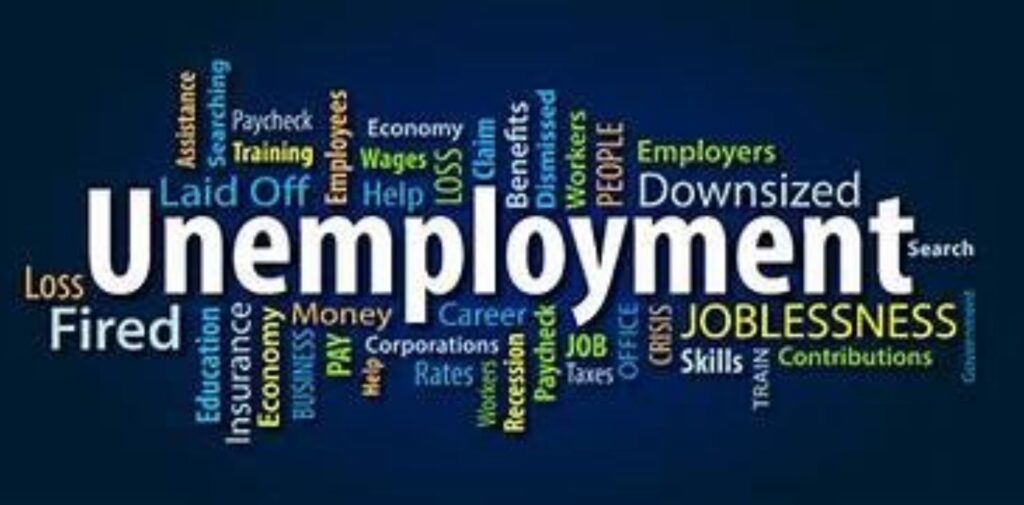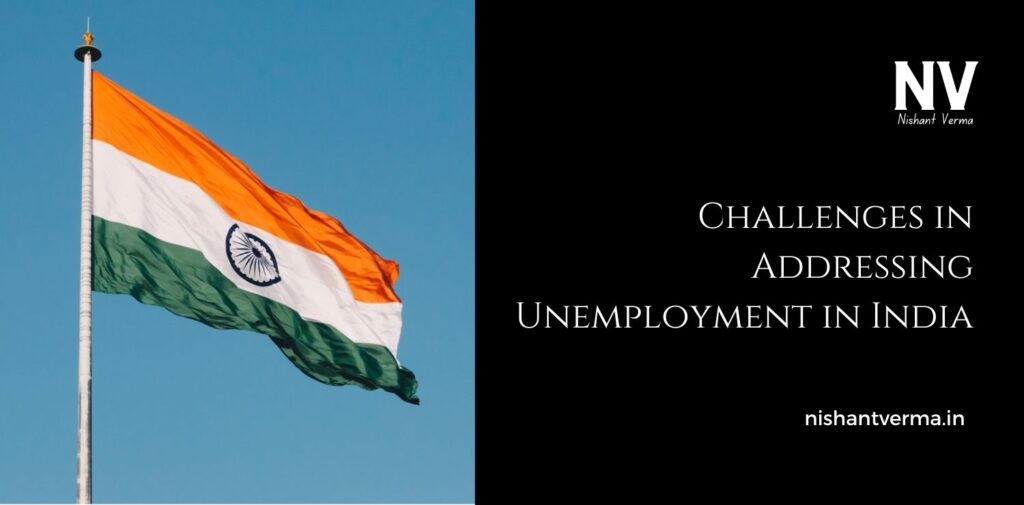Unemployment is one of the biggest problems facing India today. It means that there are many people who are willing to work but cannot find jobs. Even though India is growing quickly, millions of people, especially young people, are struggling to find work. This is a huge challenge for the country’s economy and for the future of its citizens.
In this article, we will explore what unemployment is, why it is a problem in India, and the challenges the country faces in solving this issue. We will also look at some ways the government and society are working to fix it.

What is Unemployment?
Unemployment happens when people who are able and willing to work cannot find a job. There are many reasons why this happens, but it usually means that there are not enough jobs available or that the skills people have do not match the needs of the job market.
In India, unemployment is especially a problem for young people, graduates, and people living in rural areas. While some people may have jobs in the informal economy or as daily workers, they still face challenges such as low pay, poor working conditions, and lack of job security.
Why is Unemployment a Problem in India?
Unemployment is not just a number. It affects the lives of millions of people and the economy of the entire country. Let’s look at why it is such a big problem for India.
- High Population Growth: India has one of the largest populations in the world, with over 1.4 billion people. Every year, millions of young people graduate from schools and colleges, looking for jobs. However, the number of jobs available is not enough to meet this demand. High population growth means that the country needs to create millions of jobs every year to keep up with the number of people entering the workforce.
- Education vs. Skills Gap: Many young people in India complete their education and graduate from colleges and universities. But the problem is that many of them do not have the skills that employers are looking for. Schools and colleges often focus more on theory and less on practical skills needed for specific jobs. As a result, graduates find it difficult to find employment in fields like technology, healthcare, or business, even though they have degrees.
- Slow Job Creation: Although India’s economy has been growing for many years, the rate at which jobs are being created is not fast enough to match the growing number of people who need jobs. The economy has moved towards more automated industries and technology-based businesses, which means fewer traditional jobs are available for people who don’t have specific technical skills. This has left many people, especially those in rural areas, struggling to find work.
- Underemployment: Even though some people may have jobs, they are often in positions that don’t match their qualifications. This is called underemployment. For example, a person with a college degree might work as a shopkeeper or a delivery person, doing jobs that do not require high levels of education. Underemployment leads to people not earning enough money to live comfortably, even though they are technically employed.
- Limited Opportunities in Rural Areas: Most of India’s population lives in rural areas, where there are fewer job opportunities. While big cities like Delhi, Mumbai, and Bangalore offer many job options, rural areas often lack the industries and businesses that create jobs. This forces many people in villages to migrate to cities in search of work, which increases the competition for jobs in urban areas.

Challenges in Solving Unemployment in India
India has been working hard to solve the unemployment problem, but there are many challenges that make it difficult to fix. Let’s look at some of these challenges.
- Mismatch of Skills and Job Market Needs: As mentioned earlier, many young people in India do not have the skills needed for the jobs that are available. The job market is changing quickly, with new industries like technology, e-commerce, and renewable energy growing. However, many schools and colleges are not yet training students for these jobs. This skills gap makes it harder for young people to find work, even though there may be job openings in these fields.
- Poor Infrastructure in Rural Areas: Infrastructure, such as roads, electricity, and internet access, is much better in cities than in rural areas. This makes it difficult for businesses to set up in villages or small towns. Without good infrastructure, companies are less likely to create jobs in rural areas, which leaves many people without work options. Until infrastructure improves, many people in rural areas will continue to struggle to find jobs.
- Slow Growth in the Formal Sector: Most jobs in India are in the informal sector. This means that people work as daily laborers or in small businesses without any job security, health benefits, or regular pay. The formal sector, where people have permanent jobs with benefits, has been growing slowly. For the country to provide better job opportunities, there needs to be more growth in industries that offer formal jobs with good pay and conditions.
- Lack of Investment in Key Sectors: Some important sectors of the economy, like agriculture, healthcare, and education, need more investment to grow and create jobs. For example, agriculture is still the largest employer in India, but many farmers face low wages, outdated farming methods, and poor access to markets. Investing in modern farming techniques, irrigation, and better transportation could create jobs for millions of people. Similarly, investing in healthcare and education can create more jobs for doctors, nurses, teachers, and other professionals. Without investment in these key sectors, it will be difficult to solve the unemployment problem.
- Government Policies and Programs: The government has launched many programs to reduce unemployment, such as Make in India, Skill India, and PM Modi’s Employment Generation Plan. These programs aim to create jobs in manufacturing, improve skills, and support small businesses. However, these policies take time to show results, and there are challenges in implementing them effectively. For example, while Skill India offers training to young people, it is not always easy for them to find jobs after completing their courses. Additionally, some government policies have been criticized for not reaching all parts of the country or not being fully implemented.

What Can Be Done to Reduce Unemployment?
Although the problem of unemployment is difficult, there are several ways to address it:
- Improving Education and Skill Development: Schools and colleges need to focus more on practical skills and technical training. This can help young people gain the skills needed for today’s job market. More vocational training centers and online courses should be made available to help people learn new skills, such as coding, design, or digital marketing, that are in high demand.
- Encouraging Entrepreneurship: Entrepreneurship is a powerful way to create jobs. If more people are encouraged to start their own businesses, they can not only create jobs for themselves but also for others. The government can support small businesses and startups by offering loans, tax breaks, and training programs.
- Investing in Key Sectors: Investing in sectors like agriculture, healthcare, and education can create millions of jobs. Modernizing farming techniques, improving healthcare facilities, and building more schools can help reduce unemployment in rural areas and provide better job opportunities for people.
- Improving Infrastructure: Better infrastructure, such as roads, electricity, and internet access, is needed to create job opportunities in rural areas. If businesses can set up in villages and small towns, they will create jobs for people who would otherwise need to move to cities.
Conclusion
Unemployment is a serious issue in India, but it is not impossible to solve. The government and society need to work together to create more job opportunities, improve education, and provide better training for young people. By focusing on key sectors, encouraging entrepreneurship, and investing in infrastructure, India can reduce unemployment and ensure that everyone has the chance to work and build a better future.
Unemployment is a big challenge, but it also provides an opportunity for India to grow, develop, and become a country where everyone has a fair chance to succeed.




